| |||||||||
The
Old Believers and other delta people | |||||||||
After its long journey across Europe the Danube empties into the Black Sea through a delta almost three times the size of Greater London. Much of the delta is low lying and reed covered but parts are a few metres above river level and extend for many kilometers as open plains or forests. It is Europe' second largest delta and its largest wetland. The reed beds are arguably the world's most extensive and the water is home to many species including more than seventy five different fish. The delta has three main outlets - one south -one north and the Sulina Branch almost directly across the middle, west to east. In the late 1800s part of the Sulina Branch was widened and straightened giving a Channel for ocean-going cargo vessels. | |||||||||
Tony Morrison recalls his journey with John Marriner on September Tide: ' We left Constanta on Romania's Black Sea coast and headed north to the Sulina Channel where the entrance was marked by aa buoy with a flashing light. The water was brown from the sediments carried by the river and an old steam-powered pilot boat was there to meet us. The pilot directed us to head for Sulina at the mouth of the channel and the first port. On leaving Constanta we had been 'stamped' out of Romania and in Sulina we had to enter again with new passport stamps. That day we were among several foreign vessels entering including one British cargo ship, the Lancastrian Prince taking parts to an iron and steel complex being built in Galatz a city almost 80 kms upriver. The scene of the new industrial growth of Romania had been suggested as a topic for our film but instead we chose the quieter and more traditional life in the backwaters of the delta. Our charts supplied by the Danube Commission the body responsible for navigation on the river showed how the Sulina Branch or Channel was almost straight line with other channels and the old river as on the northern side. After Sulina our first destination was Mila 23 a settlement on the Old Danube roughly 23 miles from the mouth. The change was dramatic as we left the bustle of the new river and entered the world of the reeds | |||||||||
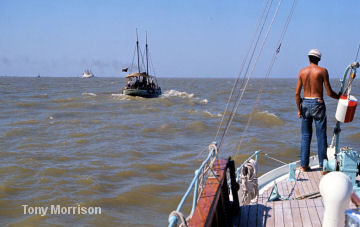 | 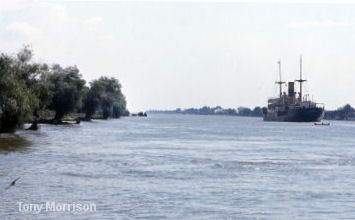 | ||||||||
| Brown river water att the mouth of the Sulina branch and the steam-powered pilot ship. In the straight Sulina Channel a Monrovian registered cargo ship | |||||||||
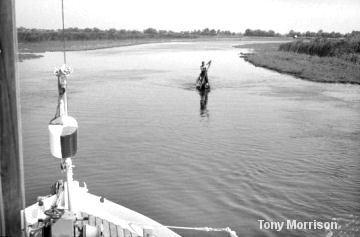 | 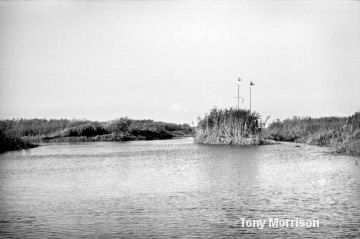 | ||||||||
| One of the numerous canals we followed once away from the Sulina Channel and where we met fishermen with their curiously nordic, black boats. September Tide was sometimes lost behind plaur or 'islands' of floating reeds. | |||||||||
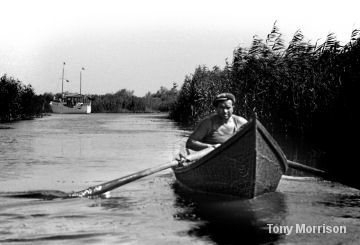 |  | ||||||||
| At times we were more adventurous and with help from the the fishermen we left September Tide and headed along narrower channels and deeper into the delta | |||||||||
The
Lipovan - Romanian, Lipoveni | |||||||||
Mila
23 | |||||||||
Our greatest wish for the delta journey was to meet some of the Lipovan, Old Believers. Their story is not unusual though becoming rarer in our interconnected times. The Old Believers broke way from the Russian Orthodox church back in the seventeenth century as they disagreed with reforms being introduced. The Russian state backed the reforms and over two centuries the Old Believers were persecuted and most left for distant parts of the country and outside. One isolated area was the Danube delta bordering The Moldavian Principality one of the many divisions of eastern Europe. Mila 23 was known as a centre for the Lipovans whose land stretched north to Vilkove, a Ukraniian town on the northern branch of the delta and beyond. Vilkove known as the 'Venice of the Delta' from its countless canals had a population of about 70pc Lipovan but was out of reach for us as Ukraine was part of the USSR [Union of Soviet Socialist Republics] The border was guarded by a string of watchtowers. The Lipovan population of Mila 23 was not so strong, perhaps less than 30 pc with the remainder being Orthodox Romanians or Ukrainians.They lived largely by fishing or cutting reeds and we received a very warm welcome | |||||||||
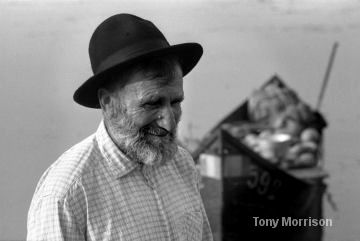 | 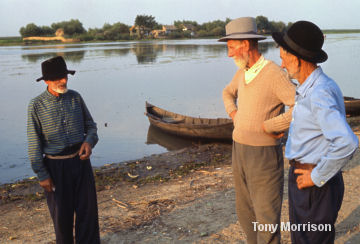 | ||||||||
| The older Lipovan men wore beards, part of their relgious culture and in the days when they were persecuted bearded men had to pay extra tax to the State. The differences between the religions is well described on the web and clearly we visited the community in a time of change. In 1966 Mila 23 was isolated from the world by political barriers so visitors from outside were largely Romanians or other East Europeans who brought their own socialist culture. | |||||||||
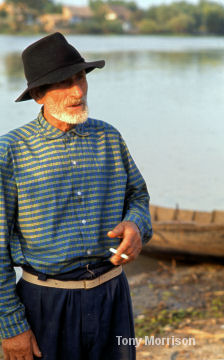 | 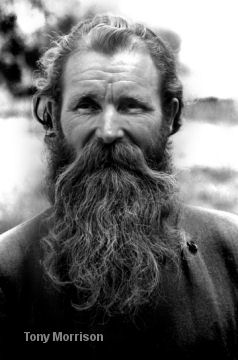 | ||||||||
| Cigarettes previously abhorred were becoming part of daily life and women were venturing out of the shadow of their menfolk. John Marriner said ' the local priest was a gentle and helpful man who told us all he knew about his sect in spite of his wife who tried to stop him ' | |||||||||
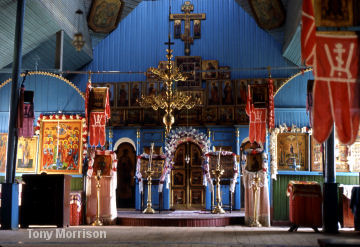 | 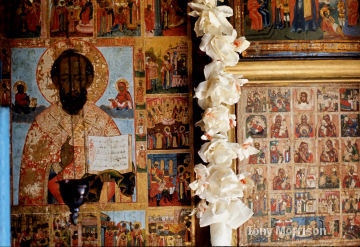 | ||||||||
| The interior of the wooden church was filled with brightly painted icons - images of Christ , Mary and saints. It was a treasure trove of faith hidden in a Romanian back of beyond - or at that time it was. John noticed how the floor was bare and the walls were marked where the floods came in.Then in 1970 a great flood destroyed much of the church and a new one was built alongside. | |||||||||
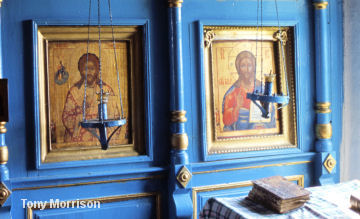 | 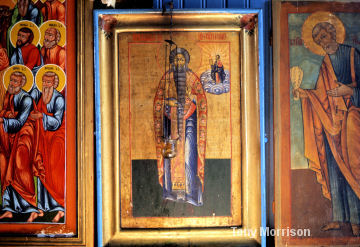 | ||||||||
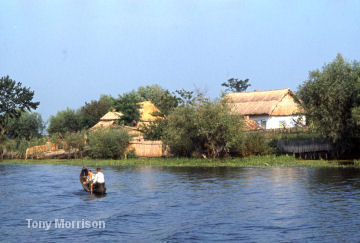 |  | ||||||||
| Mila 23 was set on ground slightly above the normal river level where willow trees were a feature and reed beds stretched to the horizon | |||||||||
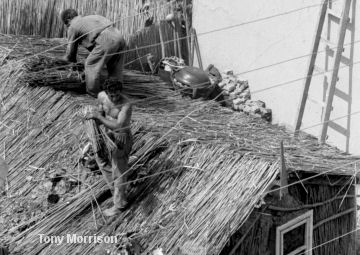 | 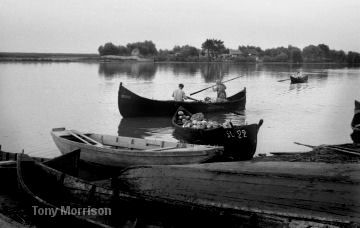 | ||||||||
| Reed thatching was everywhere. Sometimes it was simple and as we were to see later it could be very elaborate. Local produce such as water melons was transported in the black boats. | |||||||||
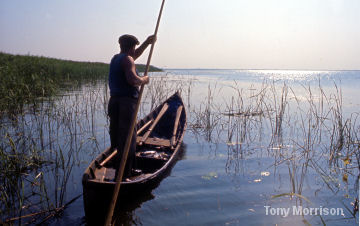 | 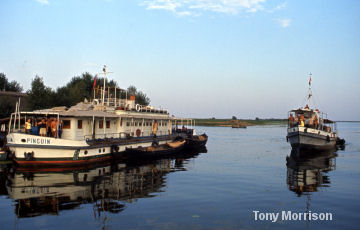 | ||||||||
| Fishing was organised through collectives or community groups based in special buildings beside the river - cherhanas -providing fresh fish to the state. A banner urged Comrade Fisherman ! Do your best to surpass your norms again 1n 1966. A strange ship, the Pinguin was an ice maker and visited the cherhanas and stocked them with ice to keep the fish fresh | |||||||||
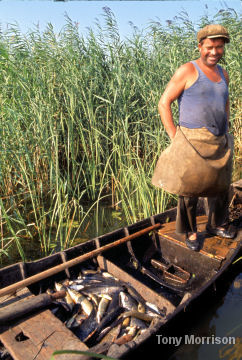 | 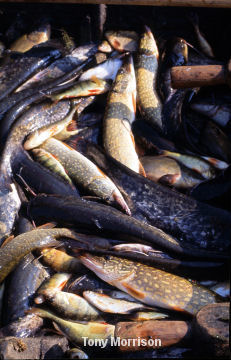 | ||||||||
| We were outside Mila 23 when we met one fisherman and we offered him a tow back to the village - he had a good catch and we were invited to a meal | |||||||||
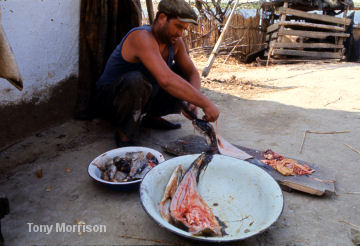 | 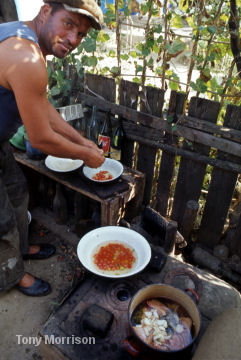 | ||||||||
| The fish was cleaned and prepared with spice and vegetables to make a fish stew similar to bouillabaisse without crayfish. It was boiled on an open stove beside the house and was delcious - It was a treat to have fish straight from the river to the pot to the table | |||||||||
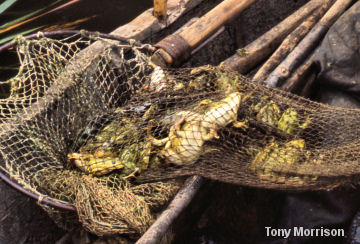 | 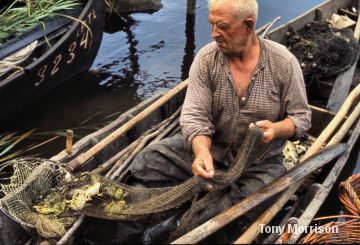 | ||||||||
| Most of the fishernmen also caught frogs, a more valuable catch at lei 4.5 a kilo as they were considered a delicacy | |||||||||
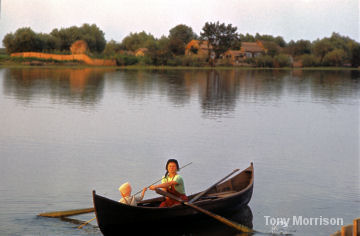 |  | ||||||||
| Our stay was brief - just a few days but in that time we made many friends - outsiders were rare, though we met some German anglers and a French cinema film group. We joined the men in the local bar and in the evening of 23rd August, at the time a Romanian Public Holiday we were invited to a party at the local House of Culture - a community hall for liberally drinking vodka and singing. | |||||||||
 | 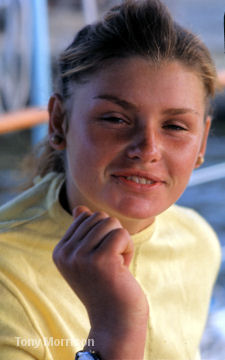 | ||||||||
| We moved on from Mila 23 to Letea, a smaller delta village about 23 kms to the northeast. On the navigation chart it appeared to be possible to go with September Tide through the canals. But sound local advice said the route was clogged with reeds and we would get stuck. So we took a long way round - back to the Sulina Branch and then another route through the Old Danube and Letea Canal. It was much simpler but not without the hazards of reeds getting entangled in the ship's propeller. | |||||||||
Letea
and CA Rosetti | |||||||||
| We arrived at the cherhana for Letea and left September Tide to walk slightly uphill to the village. Letea is on one of the open plains of the delta. The landscape is different ar the reed give way to shallow, seasonal lagoons and some forest - the 2,800 hectare Letea Forest - now part of the Danube Biosphere Reserve | |||||||||
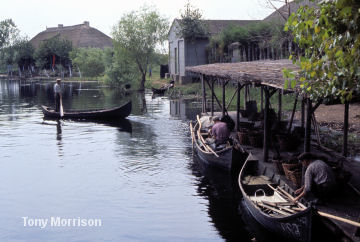 | 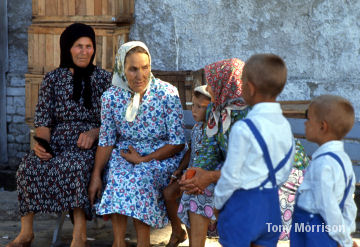 | ||||||||
Letea
and its neighbour CA Rosetti named after a 19th Romanian writer and political
leader were close to the Russian border and the population though largely Romanian
was strongly Bessarabian from part of the old Moldavian Principality - with connections
to the the old town of Vilkove only 12 kms away | |||||||||
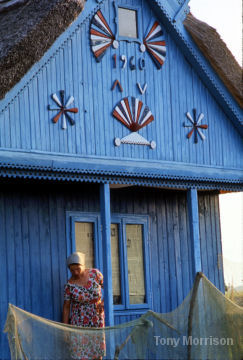 | 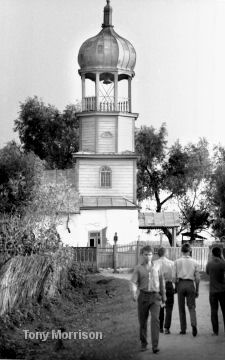 | ||||||||
| The houses were beautifully decorated. Some with coloour and designs and others with elaborate thatch and wood-work. Fences in C A Rosetti were made with reeds twisted to give a firm top row. Sunflower seeds were carefully taken from the dried flowers and laid in the yards outside the houses for perfect drying | |||||||||
 |  | ||||||||
The windmills of C A Rosetti were our next destination. In the 1930's book Beassarabia and Beyond on the bookshelf aboard September Tide we had wonderful images of the wooden built windmills. But time and changing demand meant that most of the mills had fallen into disuse and were derelict. We found one still grinding corn and with a miller who showed us around - a date of 1866 was carved on a wooden beam. | |||||||||
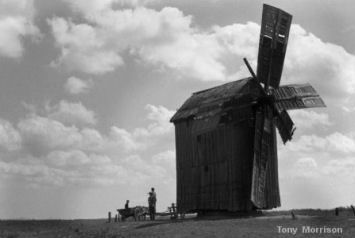 | 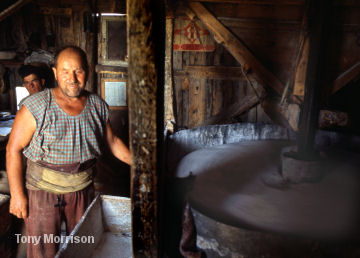 | ||||||||
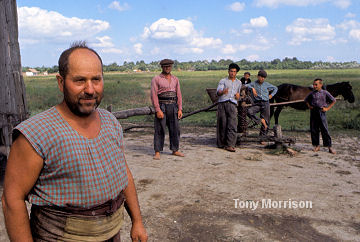 |  | ||||||||
| Two horse drawn carts from Letea and their drivers took us around the plain. The people and their way of life seemed from a different and idyllic age. The headscarves and families , the ox carts and muddy tracks - even in 1966 seened an age away from the cargo ships of the Sulina Channel and the great European river we were about to navigate. | |||||||||
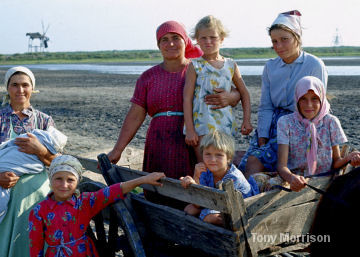 | 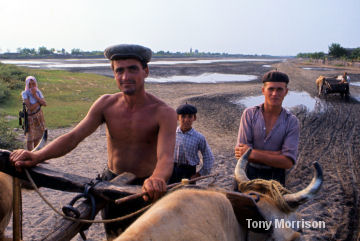 | ||||||||
| Beside the Letea Forest - poplars, English oak, lime trees, alders and ash | |||||||||
 | 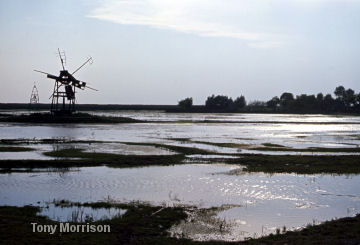 | ||||||||
The
Danube Delta was not drectly affected by the building of the Iron Gate dams but
its remarkable isolation has been broken by thirty seven years of change - Tony
Morrison -2013 | |||||||||
| |||||||||